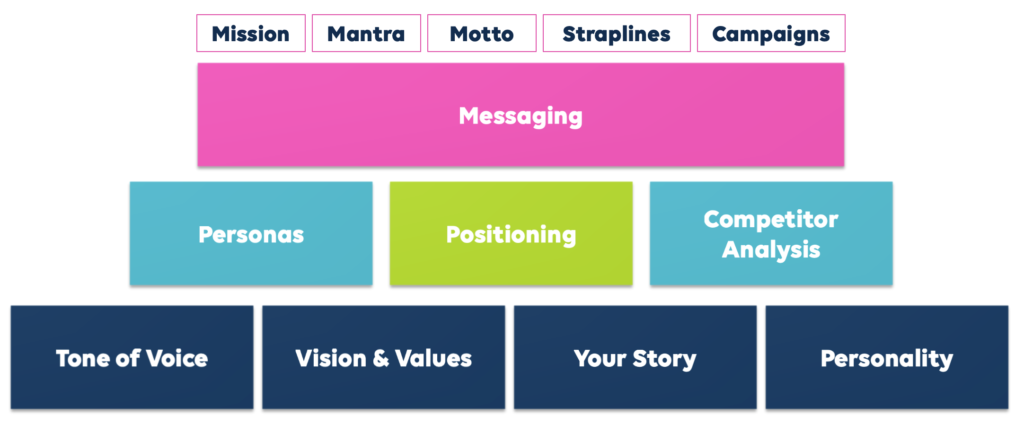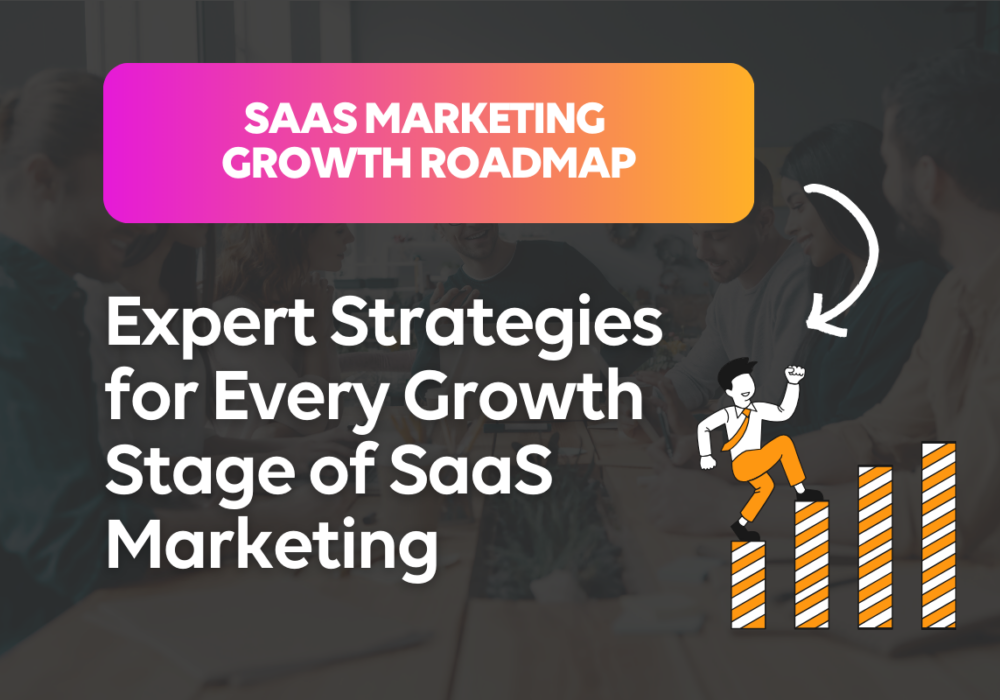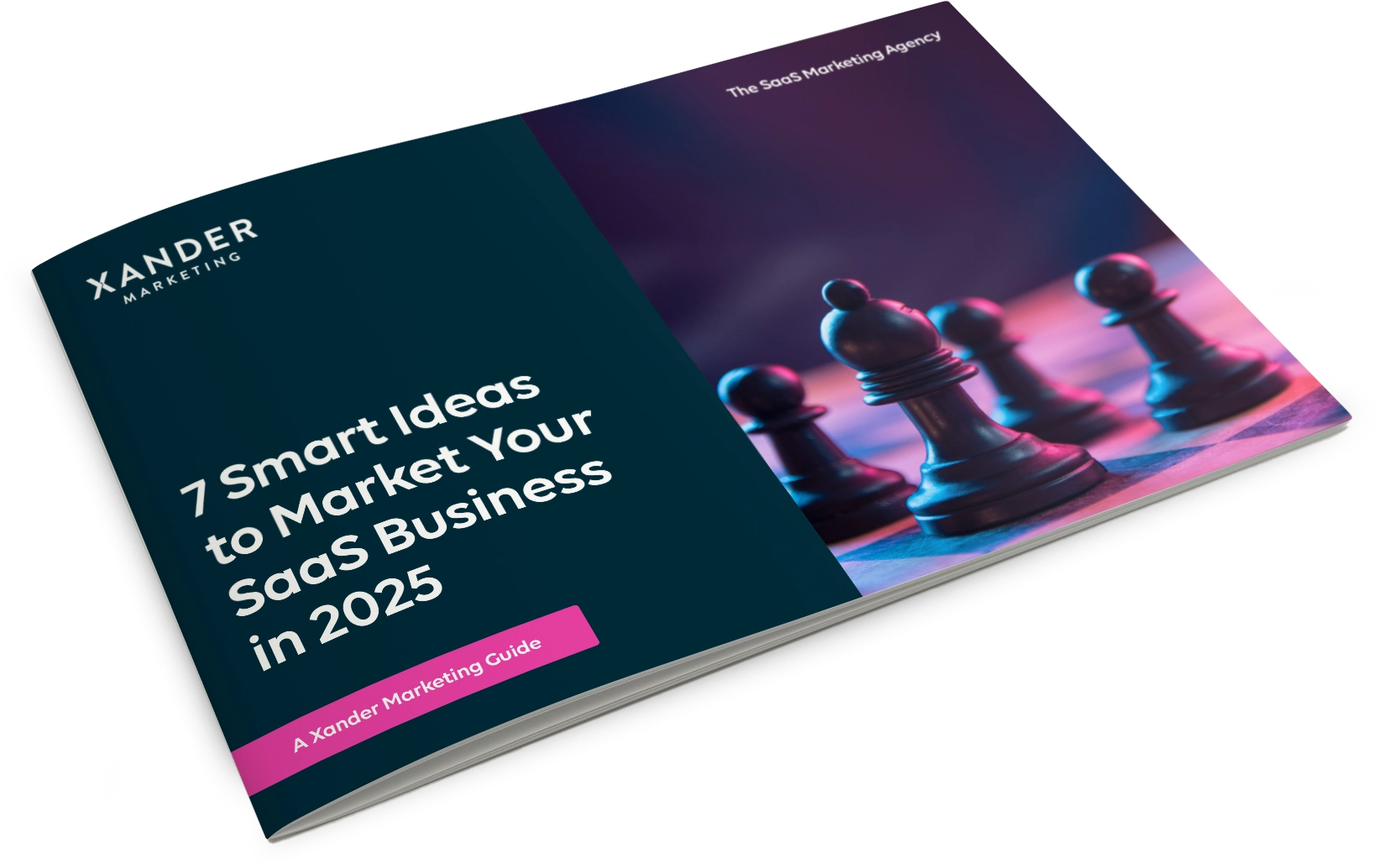How to create a SaaS Brand Strategy, Positioning and Messaging
20th August 2021
To build your brand awareness effectively, you first need to build a solid brand.
You need to develop a verbal identity that gives you all the essential foundations to increase your reach, boost sales and grow the business.
Here’s a 5 step process to create a SaaS Brand Strategy, Positioning and Messaging (or you can leave it up to us to create it for you).
- Step 1: Discover your tone of voice
- Step 2: Define your verbal brand identity
- Step 3: Undertake a competitor analysis
- Step 4: Create buyer personas
- Step 5: Create key messaging

Step 1: Discover your Tone of Voice
A clearly defined tone of voice is an essential building block to rock-solid web and marketing copy and every part of your brand identity. It:
- Makes the right impression, instantly. It improves perceptions of your brand
- Brings clarity and consistency to every piece of marketing across your business
- Increases performance and revenue, making words more effective and driving results
For your team: Get buy-in from across the business, see more effective results across the board.
For your customers: Make an instant connection in a voice your prospects will identify with immediately. Remain memorable and front of mind.
How we do it?
If you’re interested, we work with clients to deliver an interactive tone of voice workshop with you and your key team members, using several hands-on exercises to probe into your brand and discover your tone of voice:
- Interactive tone of voice session
- Clearly defined tone of voice, unique to your brand
- A comprehensive set of tone of voice guidelines for all staff and partners to follow
Step 2: Define your Verbal Brand Identity
Successful businesses know where they’re going. But more than that, they know how they’ll get there, and how they’ll act along the way. A strong, clear verbal identity:
- Solidifies your position in the market
- Provides you with a vision for your company’s development
- Engages staff, stakeholders and investors
- Gives you an outline for how to communicate with potential customers as your business grows
- Sets your corporate culture in stone so you know how to respond to opportunities and challenges alike
- Makes sure you’re always remembered for the right reasons
The outputs of this should be a:
- Brand Mission
- Brand Vision
- Brand Values
- Brand Story
- Brand Personality
Brand Mission
Your mission is the main goal you’re working towards. The reason you get up and go to work every day. It’s what you aim to accomplish each day – the how of your business.
Brand Vision
Your vision shows you why you want to achieve your mission. It’s the driving force behind your actions, guiding the changes you’ll need to make to get to the end point when you’ve accomplished everything you set out to do.
Brand Values
Your brand identity is built on your values. They define who you are – and who you aren’t. They show you what’s important, how you want to work and how you want to treat everyone you work with. Your brand values are largely for internal use, but some brands will happily publish them for their audience to see for total transparency.
Brand Story
Your story grounds your business and creates a connection. It shows where you’ve been and what brought you here. Your successes – and failures – and the lessons you’ve learned from them. It may form part of your About Us, or it may simply inform who you are as a business internally.
Brand Personality
Your personality is what your brand is known for. It communicates your values and your vision as your business goes about its mission, and it tells prospects who you are, what you do, and why you do it.
It’s the traits employees, partners and customers would use to describe your brand. It’s internal facing, but should always remind you of how your brand – and all employees – should act. What you say and what you do.
Step 3: Undertake a Competitor Analysis
To understand how best you should position itself to maximise brand awareness and stand out in the marketplace, you need to understand what your competitors are doing.
When you know how they position themselves, including what they promote, their key USPs, what tactics they use and what messaging they rely on, you can identify strengths and weaknesses – taking advantage of both.
What would we recommend?
- A top-level review document investigating your competitors’ websites
- A breakdown of competitor messaging and USPs
For more information on this read our blog on how to do a competitor analysis for your SaaS business.
Step 4: Create Buyer Personas
For your brand and your services to appeal to your prospects, you need to understand exactly who they are. You need to know what motivates them. You need to know what problems they face. And you need to know what they want to see and read.
Buyer personas help you map your brand identity more effectively. They help to target your key messaging to specific audiences, to grow your brand awareness and streamline your sales process.
What should be included?
- Review of current customer types
- Analysis of sector and wider market
- Voice of customer analysis of reviews, community groups and forums
- Core buyer personas defined
Step 5: Create Key Messaging
Results-driven messaging effectively sets up your marketing for consistent, on-going success. You should put your message first, because:
- It’s the heart of your brand identity, defining what your target audience wants to hear
- It improves and simplifies production of all other design elements and informs development and implementation
- It delivers clearer, smarter, more successful marketing campaigns in every respect
For your customers: A defined value proposition, key USPs and essential straplines will focus your target audience’s mind.
For your business: A crystal-clear understanding of your position and a message-first approach for more efficient, more cost-effective design, development and digital marketing.
What should be created?
- Value Proposition
- Brand Motto
- Brand Mantra
- Key/Top-Level Messaging
- Secondary/Campaign specific messaging
Value Proposition
Your value proposition is your differentiator, the one thing you do that no-one else does. It sums up all your products and services into the value you deliver to your clients and customers. It’s the offer you make to customers (and investors), and explanation of everything your business and/or product can do for customers in a single page (or even a single sentence). It’s your elevator pitch that piques curiosity and the detail of what sets you apart.
It’s the answer to the question: “if I am your ideal prospect, why should I buy from you and not your competitors?”
Brand Motto
Your motto is your promise to customers. What are you going to do for them? Why should they choose you? This may become your strapline or a key message, or it may remain internal.
Brand Mantra
Your mantra is the attitude you bring to work every day. You and your team members. It usually stays internal, but it’s an idea that you all try to live by each day.
Key/Top-Level Messaging
Your message sums up your business. Who you are. What you do. Why you do it. It takes every part of your brand identity and your tone of voice to deliver the information your customers want to see. It sells your business and gives customers a reason to like, to trust and to choose you.
Your top level messaging should include a range of messages. Some may stand out as straplines, some may work together, some may only be suitable for one-off campaigns. But they are all suitable marketing angles that represent your brand effectively.
Secondary/Campaign specific messaging
This messaging can be extended to target to specific products and use cases.
Bringing it all together: A Verbal Brand Identity Bible
Bringing this all together you can have one document, or multiple documents containing your new:
- Tone of Voice
- Vision and Values
- Story
- Personality
- Positioning
- Personas
- Competitor Analysis
- Mission, Mantra, Motto
- Top level messaging
- Secondary/campaign specific messaging
Brand Strategies from Xander Marketing
What we’ve outlined in this blog is highly valuable for any B2B SaaS business. But, it’s a lot of work. If you’re interested in us doing this for you get started here by booking a free marketing consultation.






